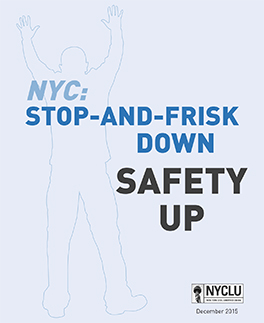Meeting the Moment: The 2024 Civil Rights Agenda for New York
Civil Liberties Union

For years, those who questioned the NYPD’s vast stop-and-frisk program were told by its supporters that it was an essential crime fighting tool. But four years after stop-and-frisk’s peak of nearly 700,000 stops in 2011, an analysis of NYPD data shows serious crimes have fallen significantly, as stop-and-frisks have declined drastically. Between 2011 and 2014, the city saw a big drop in the number of murders and shootings, as stops plummeted by 93 percent. The seven most serious crimes, called “index crimes” — murder, rape, robbery, felony assault, burglary, grand larceny and auto theft — remained flat during that time. In 2015, the trend toward fewer stops and historically low crime rates is expected to continue, based on NYPD data. Keeping the number of stop-and-frisks low is critical because even at the reduced levels of today, the discriminatory tactic mostly targets innocent people of color. It violates their rights and breeds mistrust between New Yorkers and the NYPD. This analysis dispels the myth that the massive, discriminatory stop-and-frisk program was necessary to keep New York safe.